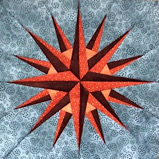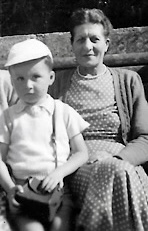Des Lewis will be 77 years old on 18 January 2025
Those who have read these episodic brainstorming reviews of mine must know they are very personal — rough-shod and spontaneous. Synchronicity and anagram mixed. I know they are not professional, never potentially publishable other than in the madness of my head, but I do hope they show grains of dark truth and cosmic panache.

These Des Lewis Gestalt Real-Time Reviews were founded in 2008.

‘What’s the loveliest word in the English language, officer? In the sound it makes in your mouth, in the shape it makes on the page? What do you think? Well now, I’ll tell you: E-L-B-O-W. Elbow.’ — THE SINGING DETECTIVE

“How shall a man find his way unless he lose it?” — Walter de la Mare

To any current genre author I have reviewed before — if you have a new story recently published or soon to be published in a collection or anthology, you may have a review by me of the story that also showcases where it is published. See HERE. (This is because I am no longer well enough to review as many books as I once did.)
Fresh Fictions, free to read HERE.
No AI input in preparation of my texts whatsoever.
THE NEW NONSCENIC
Photos here: https://conezero.wordpress.com/2024/02/24/d-f-lewis-recent-photos-1/
Pages 9 – 18
…seems like a reader’s fully realisable version of a Greece, where Layla – after this book’s Dryden translation of Ovid’s Arachne Metamorphoses – travels by bus on a “gravel-strewn” journey sown with memories, sewn with her embroidery-tapestry artefacts and her mother’s death by drowning that such sewing or sowing seemed once to scry. An enticingly textured start.
Pages 19 – 23
Bus’s stopover in Corinth for Layla – from previous gravel-strewn route to the atmospheric richness of a pot-holed city and an equally pot-holed visage working at the hotel … then setting out again in the morning for her destination of Atoll City. Love books where I don’t know what is about to happen and knowing what has already happened but not why…
Shall leave it like that tantalisingly for a day or so, I think.
Thenceforward not so much plot-telling from me but only how it and its own telling affects me.
Pages 24 – 39
From the “strew” of Macy’s flat as initial base, Layla is blended for us into Atoll City’s strengthening fabric of a gradually alternate or speculative ‘genius loci’, and I am equally empowered by the story’s own spider to weave for myself, via tentative leitmotifs, my own gestalt – Layla as down-to-unclairvoyant-earth with “sandstone walls” between her and the truth of her mother’s fate, “glass elephants”, the nature of Art as a conscious or unconscious skill, the “unravelling of history”, the inferred spinning of pungent colours and a “glimpse of the sacred” – leading to a nettle-bite, whereby we infer that those earlier pot-holes in travelling-roughness become the tiny incisions for sewing stitches…
I am not re-telling the plot’s story here (you must do that for yourself by reading this novella) but I am feeling my own bespoke path through a web of hallucinatory strands that the book allows me to extrude beyond the pages’ physical edges as well as beyond the literally enthralling plot’s own hems.
Pages 40 – 53
“…feeling the true purple as a billowing radiance that filled out the cloth,…”
Here we have Layla’s sewn, sown panorama of past and present, with temptations, bravery, pragmatic deviousness, as she faces the paradox of not believing in the future until it happens while instinctively trying to scry coins to judge, from their vibes, the nature of the one who brought them to her. The paradox of clairvoyance, sometimes believed, sometimes not. How reconcile a future tantamount to banning all of it, then?
Meanwhile, either passing from “one rubbish-strewn parking lot to another” or opening oneself to something beyond reality as a tapestry to tap. Like Art, sometimes conscious, sometimes not. Unravelling beyond the hems.
Meanwhile, the novella’s plot unfolds grippingly. But that’s in the book itself.
Sculptures by Tony Lovell to illustrate a different book
Pages 54 – 65
Xenakis was a Greek composer and architect-engineer – his music is indeed like coral gone bad, buildings being absorbed into the landscape like hologrammatic music wherein Layla finds herself now, and indeed some would say that Xenakis’ music is the raucous sound equivalent of the graphically described “pox” (cf the earlier pot-holes etc) that attacks his namesake in ‘Spin’ like huge darning-holes, his bedsheet laced with “green unguent”. Well, that’s my own spin on it, as Layla continues to be forced to transcend her antipathy toward clairvoyancy. For curative purposes.
Enthralling stuff that can be read at any level, I suggest. Inside and outside of its own terms of thought and body. Only good literature can do that. From the tangibility of a real book outward.
Pages 66 – 79
While the reader enjoys the plot being woven (please do read this book for this side of it), there are other things going on that require osmosis as well as ratiocination. I sense here a battle between the material and the immaterial. Between “If you treat works of art like fossils that’s what they become” and “Words are so final, somehow”. Only if they’re crystallised beyond a mere glass palace or elephant. Weaving as a form of futurism beyond merely a futurist art. As Layla learns more about her mother’s death as created retrocausally by that very future, I learn, too, about the consistencey of rock or coral & flesh or “green phlegm” & silk tapestry & hologram…together!
Page 80 to end
“…she would swim off the rocks…”
Attempted sacrifice to the striped scars themselves, this ending is pitch perfect, as failure slips from the grasp to be replaced, albeit still perceived as failure, by success. The struggle the author must have had in the weaving of the book itself is testament to its end and it is up to the reader to read between the lines or strands or beachheads of Layla as she stares out to sea or as “She clung to the balcony railing”. The “chafing against her skin”, we pray, to become “the pure mauve light of a summer evening”. I won’t tell you what choices I think you will need to make by the end of this book as that would be be a spoiler. I just hope that the words Nashe Crawe are a means to sew nacre: while answering the question: “How is he in himself?”, disregarding how beautiful he may be.
He or Hem. Or Her.
Another sculpture by Tony Lovell for a different book – but I now see silk worms, too!
End
Reaction: http://www.ninaallan.co.uk/?p=992